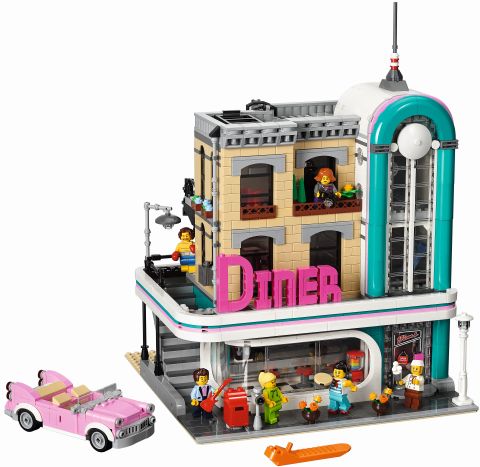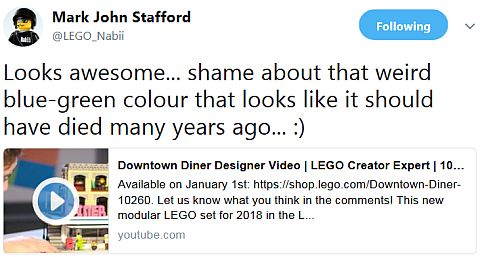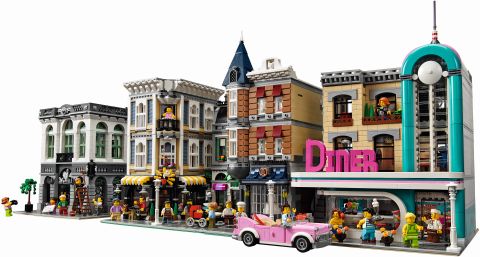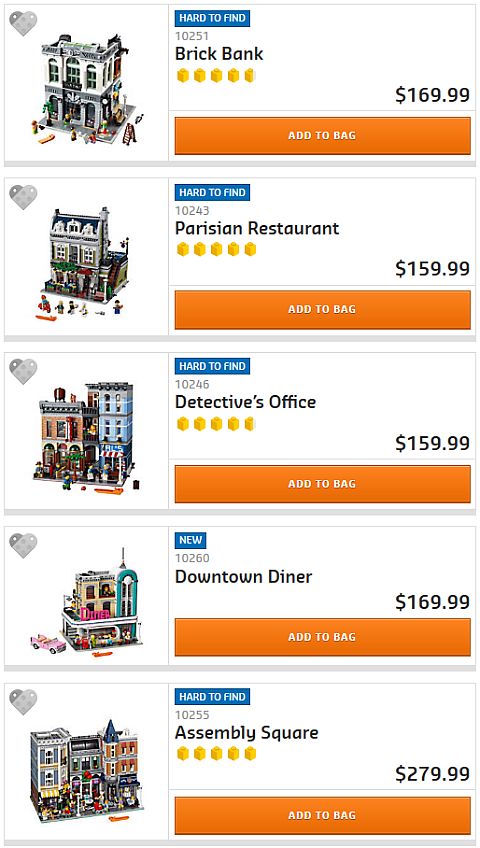Happy New Year! 2017 was a great year for LEGO fans to be alive. We got some great sets, like the #70922 LEGO Batman Movie The Joker’s Manor, the #10256 LEGO Creator Taj Mahal, the #70620 LEGO Ninjago Movie Ninjago City, the #10255 LEGO Creator Assembly Square, the #21309 LEGO Ideas NASA Saturn V, the #21310 LEGO Ideas Old Fishing Store, the super cute #75187 LEGO Star Wars BB-8, the #75192 LEGO Star Wars UCS Millennium Falcon and more. And now, with the beginning of the new year comes the first wave of new sets, as well as new promotions. So let’s see what we got this month! 🙂
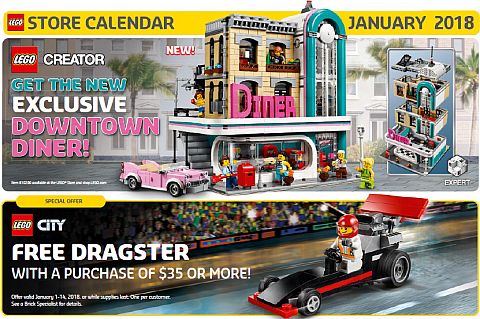
➡ FREE LEGO CITY DRAGSTER: During the first half of the month (January 1-14), you will get a free #30358 LEGO City Dragster set with purchases of $35 or more. This is sort of an odd little special, but it comes with a great minifigure that would go well with the LEGO Speed Champions line. The offer is valid on all purchases at official LEGO stores and the Online LEGO Shop.
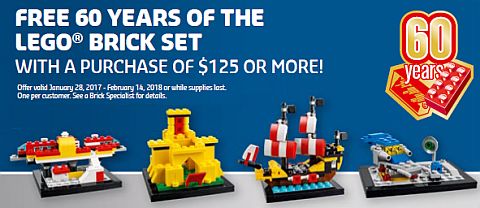
➡ FREE 60 YEARS OF THE LEGO BRICK SET: A more interesting freebie is the #40290 LEGO 60 Years of the LEGO Brick set, with a collection of mini versions of some of the most iconic sets from LEGO’s past. However, this is more of a February promotion, as it won’t be valid until the end of the month (January 28 – February 14). You will be able to get the set with purchases of $125 or more on all purchases at official LEGO stores and the Online LEGO Shop.

➡ LEGO CREATOR DOWNTOWN DINER AVAILABLE: The #10260 LEGO Creator Downtown Diner, the latest in the LEGO Modular Building series, is now available! This unusual and delightful set is a very interesting addition to the collection, and I can’t wait to build it! You can find the press-release with more information here: LEGO Modular Building Downtown Diner Coming! and purchase the set at the LEGO Creator section of the Online LEGO Shop.
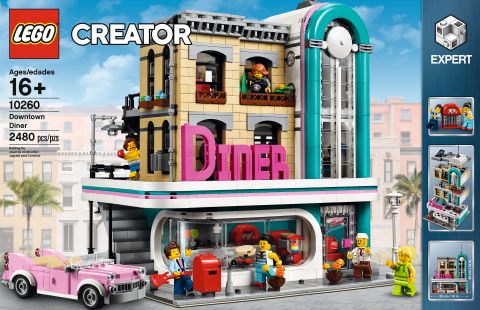
➡ LEGO ARCHITECTURE SHANGHAI AVAILABLE: The #21039 LEGO Architecture Shanghai set is the latest in the LEGO Architecture Skyline Collection, and it is definitely a beauty. It features mini replicas of Chenghuang Miao Temple, Longhua Temple and Pagoda, Radisson Blu Hotel, Bund area, Oriental Pearl, World Financial Center, and the Shanghai Tower. If you haven’t done so already, I highly recommend checking out the LEGO Architecture Skyline Collection. They really are beautiful sets that are a pleasure to build and display. You can find them under the LEGO Architecture section of the Online LEGO Shop.
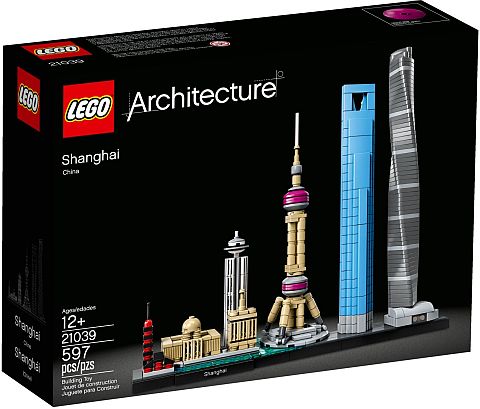
➡ 2018 LEGO BRICKHEADZ SETS AVAILABLE: There are five new brickbuilt characters in the LEGO BrickHeadz collection; #41598 LEGO BrickHeadz The Flash, #41599 LEGO BrickHeadz Wonder Woman, #41600 LEGO BrickHeadz Aquaman, #41601 LEGO BrickHeadz Cyborg, and probably the most interesting #40270 LEGO BrickHeadz Valentine’s Bee. See them at the LEGO BrickHeadz section of the Online LEGO Shop.

➡ 2018 LEGO CLASSIC SETS AVAILABLE: If you prefer to freebuild with simple LEGO bricks, or you would like to bulk up on basic LEGO elements, check out the LEGO Classic line. Besides the regular brick boxes, LEGO Classic includes a series of special edition sets this year featuring a range of colorful bricks and elements, plus a unique 60th anniversary tile. This includes the #10403 LEGO Classic World Fun, and #10404 LEGO Classic Ocean’s Bottom that are now available under the LEGO Classic section of the Online LEGO Shop.

➡ 2018 LEGO CITY SETS AVAILABLE: LEGO City comes with two new sub-themes. The LEGO City Police is now chasing badguys hiding out in the mountains in some really fun sets like the #60173 LEGO City Mountain Arrest with a bear, a guy in boxers, and a beehive! The second LEGO City sub-theme is centered around mining and mining equipment. The #60188 LEGO City Mining Experts Site is a particularly interesting set. There are also a number of other great sets, like the #60182 LEGO City Pickup & Caravan. You can find them all under the LEGO City section of the Online LEGO Shop.

➡ 2018 LEGO CREATOR SETS AVAILABLE: LEGO Creator includes a lot of interesting sets this year, including the #31081 LEGO Creator Modular Skate House, the #31075 LEGO Creator Outback Adventures, the #31076 LEGO Creator Stunt Plane, the #31071 LEGO Creator Drone Explorer, and the #31072 LEGO Creator Extreme Engines, and more. All of them are 3-in-1 sets, so you can rebuild them in at least three different ways. Find them at the LEGO Creator section of the Online LEGO Shop.

➡ 2018 LEGO DISNEY SETS AVAILABLE: We get five new Disney sets this year, including the #41151 LEGO Disney Mulan’s Training Day, #41152 LEGO Disney Sleeping Beauty’s Fairytale Castle, #41153 LEGO Disney Ariel’s Royal Celebration Boat, #41154 LEGO Disney Cinderella’s Dream Castle, and #41155 LEGO Disney Elsa’s Market Adventure. You can find them all under the LEGO Disney section of the Online LEGO Shop.

➡ 2018 LEGO ELVES SETS AVAILABLE: The highly popular and magical LEGO Elves line continues with five new sets; #41190 LEGO Elves Emily Jones & The Eagle Getaway, #41191 LEGO Elves Naida & The Water Turtle Ambush, #41192 LEGO Elves Azari & The Fire Lion Capture, #41193 LEGO Elves Aira & The Song of the Wind Dragon, and #41194 LEGO Elves Noctura’s Tower & The Earth Fox Rescue. You can find them all under the LEGO Elves section of the Online LEGO Shop.

➡ 2018 LEGO FRIENDS SETS AVAILABLE: Lots of new LEGO Friends sets too! Some of the most interesting ones are the #41338 LEGO Friends Stephanie’s Sports Arena, the #41339 LEGO Friends Mia’s Camper Van, and the #41340 LEGO Friends Friendship House. The sets also come with some interesting new elements, and redesigned LEGO Friends mini-dolls. See the new sets at the LEGO Friends section of the Online LEGO Shop.

➡ 2018 LEGO JUNIORS SETS AVAILABLE: There are several new LEGO Juniors sets as well, including the #10751 LEGO Juniors Mountain Police Chase, #10750 LEGO Juniors Road Repair Truck, #10749 LEGO Juniors Mia’s Organic Food Market, and #10748 LEGO Juniors Emma’s Pet Party, and more. You can find them at the LEGO Juniors section of the Online LEGO Shop.

➡ 2018 LEGO MINECRAFT SETS AVAILABLE: LEGO Minecraft seems to be a very popular theme, as LEGO continues to churn out a great number of new sets. While in 2017 we got several large sets in the LEGO Minecraft line, this time we are getting seven smaller sets in the $20-$50 range. You can find all the new sets under the LEGO Minecraft section of the Online LEGO Shop.

➡ 2018 LEGO NEXO KNIGHTS SETS AVAILABLE: All five of the first wave of 2018 LEGO Nexo Knights are available, with some really fun designs and play-features. You can find them all at the LEGO Nexo Knights section of the Online LEGO Shop.

➡ 2018 LEGO NINJAGO SETS AVAILABLE: Besides the recently released second wave of sets related to The LEGO Ninjago Movie that you can find at The LEGO Ninjago Movie section of the Online LEGO Shop, there is also a new wave of regular LEGO Ninjago sets related to the next season of the TV show. This includes some really nice sets, like the #70643 LEGO Ninjago Tempe of Resurrection, as well as a whole new series of Spinjitzu spinners. You can find them all under the LEGO Ninjago section of the Online LEGO Shop.

➡ 2018 LEGO STAR WARS SETS AVAILABLE: Most of these sets became available at various LEGO retailers at the end of December, but their official release wasn’t until today. Some of the most notable ones are the #75202 LEGO Star Wars Defense of Crait, a couple of small but interesting LEGO Star Wars Microfighters and LEGO Star Wars Battle Packs, and two new LEGO Star Wars large action figures (a new version of Darth Vader and Boba Fett). You can find them all under the LEGO Star Wars section of the Online LEGO Shop.

➡ 2018 LEGO SUPER HEROES SETS AVAILABLE: The second wave of sets related to The LEGO Batman Movie are quite impressive as well, including the #70923 LEGO Batman Movie The Bat-Space Shuttle, and the fun and funny #70920 LEGO Batman Movie Egghead Mech Food Fight. Also, The LEGO Batman Series 2 Collectible Minifigures are now available! Under the LEGO Marvel Super Heroes line the #76099 LEGO Super Heroes Rhino Face-Off by The Mine, and the #76100 LEGO Super Heroes Royal Talon Fighter Attack are pretty interesting. Also, there is a new selection of LEGO Super Heroes Mighty Micros sets for both Marvel and DC fans. You can find the new sets under The LEGO Batman Movie section, the LEGO DC Super Heroes section, and the LEGO Marvel Super Heroes section of the Online LEGO Shop.

➡ 2018 LEGO TECHNIC SETS AVAILABLE: So many very impressive LEGO Technic sets this year! Like the #42074 LEGO Technic Racing Yacht, the #42077 LEGO Technic Rally Car, and the very impressive #42078 LEGO Technic Mach Anthem! You can find them all at the LEGO Technic section of the Online LEGO Shop.

As you can see, there are many-many new sets to choose from, and there is something for everyone’s taste and budget. If you are not sure about what you want, or you have too big of a wanted list, I would suggest that you start with the New Sets section of the Online LEGO Shop. Browse the selection of the latest sets, and then narrow down your choices by adding your favorites to your Wish List. You can then narrow down your list even further by transferring your most wanted sets to your Shopping Bag. Remember that most of the new sets should be available for the rest of the year, so you have plenty of time to purchase them. And of course, if you are already clear on what you want, you can skip the selection and narrowing down process and buy them right away. Also, don’t forget some of the recent big releases like the #70922 LEGO Batman Movie The Joker Manor, and the #10256 LEGO Creator Taj Mahal. Have fun shoppin’!

What do you think? How do you like the first wave of 2018 LEGO sets? Which ones are your favorites, and which ones are you definitely planning to add to your collection? Feel free to share your thoughts and discuss in the comment section below! 😉
And you might also like to check out the following related posts:

